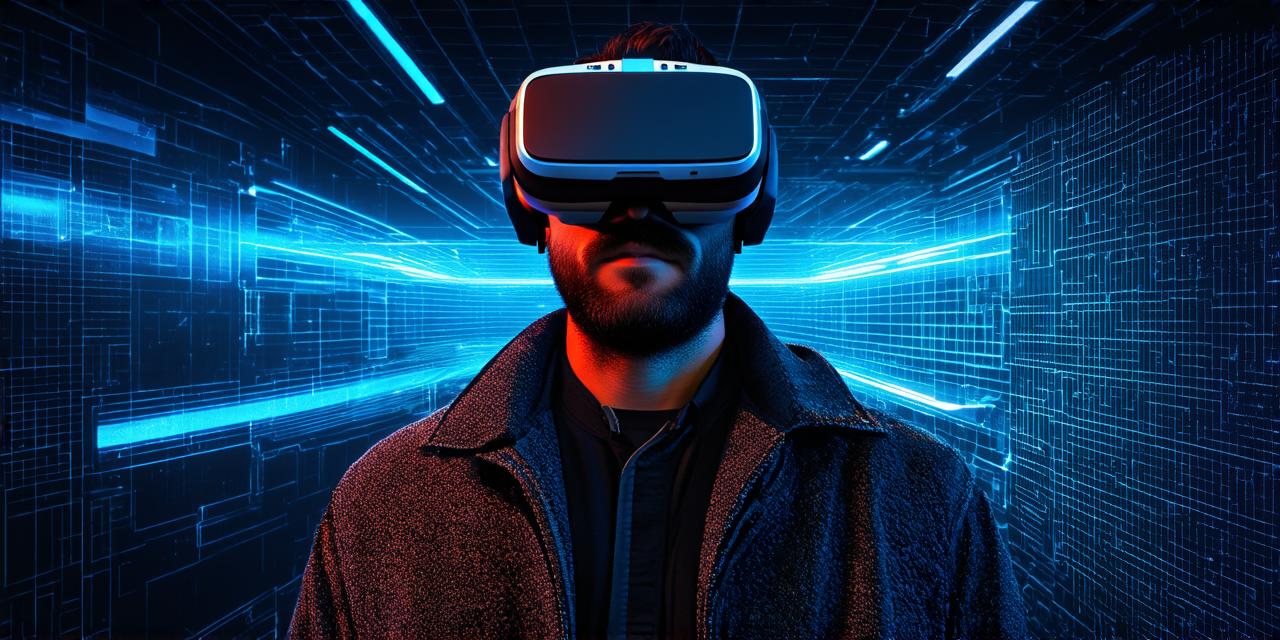Virtual reality (VR) technology has come a long way since its inception. From simple gaming devices to immersive experiences that blur the line between reality and imagination, VR has transformed industries and opened up new possibilities for development.
History of Virtual Reality Technology
The concept of virtual reality can be traced back to the 1960s, when Ivan Sutherland created the first virtual environment called “Skyworld.” However, it wasn’t until the 1980s and 1990s that VR technology started to take off. In 1983, the first commercially successful VR system was launched by Computer Space Corporation, called the “Cybervision.” This was followed by other systems such as the Virtual Reality Theater (VRT) in 1990 and the Oculus Rift in 2012.
In the early days of VR, the technology was primarily used for gaming and entertainment. However, as the technology advanced, it began to be applied to other industries such as education, healthcare, and design. For example, in 1994, researchers at the University of Washington developed a prototype of a surgical simulator that allowed surgeons to practice procedures in a virtual environment. This was followed by the use of VR in training astronauts for space missions and designing buildings in virtual environments.
Evolution of Virtual Reality Technology
Over the years, VR technology has evolved significantly. One of the major advancements has been the development of wireless headsets that allow users to move freely without being tethered to a computer or other device. This has made it possible to create more immersive and realistic experiences, such as virtual vacations or virtual concerts.
Another key development has been the integration of artificial intelligence (AI) into VR systems. AI-powered virtual assistants can help users navigate through complex virtual environments and even adapt to their preferences. For example, a virtual assistant could learn a user’s preferred way of interacting with virtual objects and adjust the environment accordingly.
The rise of mobile devices has also had a significant impact on VR technology. With smartphones and tablets becoming more powerful, it is now possible to create VR experiences that can be accessed from virtually anywhere. This has led to the development of augmented reality (AR) apps that overlay virtual objects onto the real world.
Impact of Virtual Reality Technology on Development
The impact of VR technology on development has been significant. For example, in architecture, designers can create virtual models of buildings and test them in a virtual environment before building them in the real world. This allows for faster and more efficient design processes and reduces the risk of costly mistakes.
In healthcare, VR technology is being used to treat a range of conditions such as phobias, PTSD, and anxiety disorders. Virtual reality can provide a safe and controlled environment for patients to confront their fears and anxieties. It can also be used to simulate surgical procedures and help medical students learn about human anatomy.
In education, VR technology is being used to create immersive learning experiences that engage students and enhance their understanding of complex concepts. For example, a virtual field trip could allow students to explore the solar system or the ocean depths without leaving the classroom.
Future Prospects of Virtual Reality Technology
As VR technology continues to evolve, it is likely that we will see even more innovative applications in various industries. For example, VR technology could be used to train astronauts for space missions or allow architects to design buildings on other planets.
One of the major challenges facing VR technology is the high cost of hardware and software. However, as technology continues to improve, we can expect prices to come down and make VR more accessible to a wider range of users.
Another challenge is the lack of standardization in the VR industry. As different companies develop their own VR systems, it can be difficult for developers to create content that works across multiple platforms. However, as the industry matures, we can expect greater standardization and compatibility.
